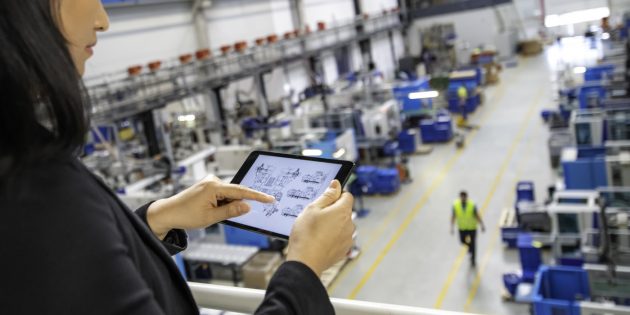
Manufacturing predictions for 2021
by Thomas Leeson, Senior Industry Strategist, Manufacturing and Supply Chain at OpenText
New growth and opportunities for the manufacturing industry underway as the year comes to a close

Photo: Getty Images
2020 has been a tumultuous year, especially for the manufacturing sector. However, as the year comes to a close, it paves the way for new growth and opportunities for the industry.
Thomas Leeson, senior industry strategist, Manufacturing and Supply Chain at OpenText, has the following predictions for what 2021 will look like in the manufacturing sector:
Adaptability and resilience are watchwords for the new supply chain
COVID-19 exposed the risk for manufacturers in their current supply chains. Manufacturers – and especially those with complex, global supply chains, must be able to quickly adapt to handle major disruption. This will accelerate the trend towards the adoption of cloud-based supply chain platforms that enable flexible and scalable ways to trade, collaborate and grow digital partner ecosystems. These platforms also provide benefits for companies looking to ensure their ethical and sustainability goals are met vis-à-vis the supply chain.
Accelerating digital transformation puts more focus on data
In response to the pandemic, manufacturers that were previously faced with a tidal wave of data are being challenged to accelerate their digital transformation initiatives even quicker. COVID-19 has further emphasized the importance of understanding demand signals and addressing customer concerns in order to assess unmet needs. In turn, transformative activities like using multiple sources of customer data will be imperative to understanding new challenges consumers are looking to solve moving into an unprecedented and/or unpredictable 2021.
Changing work practices place focus on automation
Industry skill gaps have been a topic of conversation for many years, and commitments made by these industries towards narrowing those gaps show promise in future proofing the workforce. However, the rapid introduction of new workplace measures in recent months, like socially distanced production lines, puts added pressure on companies to adapt quickly to new work requirements. Automation is the key to meeting the rapidly changing landscape requirements and quickly enable employees to augment their roles in order to meet consumer demands and new industry regulations.
Innovation and agility point to the digital twin
The digital twin – virtual replicas of a physical product, equipment, process or the supply chain – help to monitor, simulate and optimize performance. However, they’re rapidly becoming an even more critical tool for organizations looking to anticipate stress points, enable more efficient model adaptations and more quickly rework its processes in today’s uncertain climate. Perhaps most importantly, the digital twin provides a fast and cost-effective method to continue focusing on innovation when in many cases funds are being diverted to recovering revenue generation for the foreseeable future.
The autonomous world may be further down the road
2020 has pushed forward a turning point for disruptive technologies and market demands that will transform operations, undoubtedly. Manufacturers are getting smarter and those with a digital foundation are enabling the connected, intelligent and trusted supply chain to increase resilience and ensure continuity of their business operations. Within any industry, however, unpredictability can play a factor in progress, and the events of COVID-19 have pressed companies to reevaluate investing in developing areas of their business and focus on liquidity above all else. Autonomous ecosystems are the best opportunity there is when looking to mitigate future risk, predicting disasters and enabling an agile workforce, and organizations will continue to exploit AI-assisted analytics to deliver value into all aspects of production and product development.